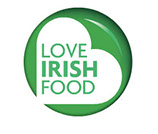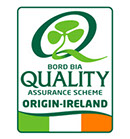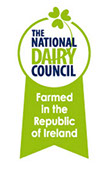Food Labelling
The Irish Food Writers’ Guild vision for food labelling is:
“All labelling in Ireland should be transparent, legible, unambiguous, truthful, and in plain English, to enable consumers to make informed choices”
Here we have collated information on labelling in the form of a report on recent work carried out by the FSAI and the Taste Council on marketing terms; some guidelines around labelling terms; and a checklist of questions to consider when reading food labels.
This resource will be updated over time as more information becomes available and if new legislation occurs.
Help us check the truth on food labels
Compiled by Ross Golden-Bannon
More and more companies are using terms like ‘artisan, artisanal, farmhouse, traditional, natural and craft’. However, are there any legal definitions for these words and do regulations exist to remedy them?
The short answer is no. There are no legal definitions for these words, so you’ll find them on products being made with the highest of integrity as well as on inferior products, as well as being used as cynical marketing tools.
With this in mind, the FSAI (Food Safety Authority of Ireland) joined forces with the Taste Council to agree a guidance note on the use of food marketing terms. It is not legally binding, but they are an important first step in protecting these terms. This is where you come in.
We’ve listed below a summary of the Guidance Notes produced by the FSAI, which you can use as a checklist on items you may suspect are misusing the terms.
ARTISAN / ARTISINAL
Produce using these terms must meet the following criteria:
1. The food is made in limited quantities of no more than 1,000 kg or litres of food per week and it must be made by skilled craftspeople.
2. The processing method is not fully mechanised and follows a traditional method, traditional meaning transmission of skills between generations of not less than 30 years.
3. The food is made in a micro-enterprise, employing not more than 10 people at a single location and with an annual turnover of not more than €2 million.
4. The characteristic ingredient (i.e. strawberries in strawberry jam, pork in ham or milk in cheese) is grown or produced locally, within 100 km, where seasonally available and practical.
FARMHOUSE
Produce using the term farmhouse must meet the following criteria:
1. The food is made in a single location on a farm.
2. The food is made in a micro-enterprise, employing not more than 10 people and with an annual turnover of not more than €2 million.
3. The characteristic ingredients are grown or produced locally, within 100 km. The term ‘characteristic ingredients’ means milk in cheese, strawberries in strawberry jam or pork meat in ham, etc.
Notes
Exceptions have been made for some foods, which for historic reasons now carry the term farmhouse. This are bread with a rounded, split crust, with or without a flour dusting, as well as bread mixes for this type of bread; soup made with course chunky vegetables; course textured pâté; cheese produced on a farm.
The term ‘Farm Fresh’ is accepted for historic reasons for two items: pasteurised milk and cream, which has a short shelf life where processing of the milk or cream takes please within the region of the farm.
TRADITIONAL
The use of the term ‘traditional’ gives the impression of time-honoured methods and historic recipes. It should only be used if it falls into either one or both of the two following categories:
1. The recipe for the product must be proven to be used for at least the last 30 year, without significant modification. The term ‘significant modification’ means changes cannot have been made to the ingredients, which would change its flavour, texture or appearance. Neither can any replacements be made with products, which would not have been available at the time of the recipe’s inception.
2. The food has been made using a method of preparation that has been used for at least the last 30 years. Some exceptions are allowed for automation and mechanisation as long as it does not deviate substantially from the traditional method.
NATURAL
The proliferation of the term ‘natural’ and related terms like ‘naturally better’ is often the last resort of a food producer attempting to hide significant processing or as an extra ‘spin’ on produce that is no different from others (one bag of ‘chopped natural carrots’ is essentially the same as a bag of ‘chopped carrots’ without that term). It is often used with single ingredient items.
1. A food item can only be termed ‘natural’ if it has had minimal processing. The term ‘minimal processing’ means it has not been significantly interfered with by human interaction. This means the food can be chopped, sliced, grinded, peeled, juiced, blanched, pasteurised, frozen and dried. But it cannot be processed in more complex forms, which significantly change the nature of the food. These processes include concentration, very high temperature cooking processes, curing, brining, refining, chemical extraction, genetic modification and cloning.
2. The term ‘natural’ can be used with a single ingredient food as long as it is formed by nature and not significantly interfered with by human interaction. A single ingredient must be just that and cannot also have additives or other ingredients. Such foods are termed ‘compound foods’, outlined below.
3. Compound foods can use the term natural as long as the ingredients are ‘natural.’ So, although a cooked ham has several ingredients, including pork, water, salt and spices, as long as all of those items are ‘natural’ it can be termed ‘natural ingredient ham.’
Note
There are some exceptions to these rules for historic reasons, which include the following items: natural yoghurt, natural fromage frais and natural cheese, which customers accept carry the meaning of ‘plain and unflavoured.’
OTHER CONCERNS
CRAFT
The working group of the FSAI (Food Safety Authority of Ireland) and the Taste Council were unable to get agreement on the use of the term ‘craft’ so we would urge consumers to think carefully about the use of the term, especially when used by mass beer producers compared to those with much smaller outputs.
FARMHOUSE ‘STYLE’
The term ‘style’ is not considered a helpful phrase in marketing terms and should only be used when it does not give the consumer the impression that the produce falls under any of the criteria above. So although terms like ‘traditional style’ and ‘farmhouse style’ are not illegal, they are misleading and, in our view, the use of the term should act as a warning sign to consumers on the integrity of the product.
HIDDEN CHEMICALS
There are innumerable other ingredients in mass produced foods, which manufacturers have lobbied hard not to have included on food labels. They have achieved this by having a variety of chemicals and compounds classified as part of the processing rather than as ingredients. This is why we always recommend people to buy fresh food, from a known and reliable source. Buying in quantities to suit consumption within a normal food spoiling cycle.
WHO DECIDED ON THE MEANINGS?
There were nine experts on the FSAI and the Taste Council Working Group that created the Guidance Notes.
While great progress was made, with some very progressive thinking from surprising sources, the weight of influence clearly fell with mass food producers.
This Guidance Note was prepared by the Food Safety Authority of Ireland with the help of a working group:
• Denis Carrigan (Glanbia)
• Joe Dunne (Kerry Foods)
• Mary Hughes (Food and Drink Industry Ireland)
• Therese Moore (Britvic)
• Raymond O’Rourke (Taste Council)
• Giana Ferguson (Gubeen)
• Dermott Jewell (Consumers Association of Ireland)
• Pauline Ryall (formerly Food and Drink Industry Ireland)
• Larry McDonald (formerly Irish Pride Bakeries)
LINKS:
FSAI
www.fsai.ie/news_centre/press_releases/marketing_terms_14052015.html
To download the FSAI Guidance Note:
https://www.fsai.ie/publications_food_marketing_terms/
The Taste Council
IFWG member Katy McGuinness‘s feature “Not the Full Irish” for The Irish Independent, read it here.

Labelling guidelines and checklist
Compiled by Dee Laffan
The Irish Food Writers’ Guild has created this quick guide as a resource and checklist for consumers to help make more informed choices when shopping for groceries.
While labels are obviously added to food to offer further knowledge about origin, traceability, production, lifespan and nutritional content, this information can often be difficult to understand because of the way in which it is presented and there are currently no legally agreed definitions. There are some common misinterpretations and terminology within these headings that are worth learning so that you will be better equipped to ask questions about the food you choose to purchase and consume.
Questions to think about when reading labels…
What does it claim to be?
- A product is “low fat” when it contains less than 3g fat in 100g.
- A product is “reduced fat or light” if it contains 25% less fat than the standard version of the product.
- A product is “low sugar” if it has less than 5g of sugar per 100g.
- If a product has “no added sugar” on it then no sugars have been added but the product may still contain natural sugars.
- A product is “high fibre” if it contains at least 6g of fibre.
- If a product is “sugar free” it may not have any sugar, but it may have added sweeteners.
What does the nutritional information mean?
- Nutritional information must be displayed on the back of packaging and breaks down the energy, fat, carbohydrate, sugar, fibre, salt and protein in a product and per 100g.
- The calorie content of a product is always displayed as ‘energy’.
- Most products display Front of Pack (FoP) labelling of per serving Guideline Daily Amount (GDA) in respect of that product, as well as the full nutritional breakdown on the back or side of the packet.
- Be aware that FoP GDAs can be misleading. Check how many servings the product is claiming to include. The nutritional information will be broken down by this amount to achieve the ‘per serving’ GDA.
What ingredients does it contain?
- Ingredients lists will not contain amounts, but they are always listed from the greatest amount added to least.
- Note how many ingredients are on the label. If you are buying a product that you know should only have three ingredients, but has at least 10, perhaps look closer at what else is included to make a more informed choice.
- Processed food can often include hidden sweeteners, salt and additives as they are using an alternative name. See the glossary below to familiarize yourself with these.
Where was the product made?
- Not all foods have to carry their country of origin. Under EU food labelling law foods that must are: raw beef and veal; raw poultry meat from a third country; fruit, vegetables; and honey.
- The exception to this rule is if the absence of the country of origin misleads the consumer to think it is Irish. For example, if the name of a product was an Irish word, but it was made outside of Ireland, it would have to carry the country of origin.
- If a product states that it is a “product of Ireland”, it does not mean that it is produced in Ireland. The meat may be from outside the country, but simply processed and packaged here.
- Look for symbols from the following companies on products to indicate their authenticity:




Glossary of labelling terms
This is just a short list of ingredients and terms that we feel are important to know when reading labels. We will update this list on a regular basis and if you feel there are any terms you wish to be added, please contact Dee Laffan at deelaffan@gmail.com.
• Best before date – an advisory date only, refers to the quality of the product.
• Display until date – used by supermarkets to help keep track of stock.
• Monosodium glutamate – MSG, is a flavour enhancer added to foods.
• Sell by date – used by supermarkets to help keep track of stock.
• Sorbitol – a sugar alcohol, used as a bulk sweetener in many food products.
• Sugar – synonyms found on labels: Sucrose, Maltose, Dextrose, Fructose, Glucose, Galactose, Lactose, High fructose corn syrup, Glucose solids, Cane juice, Dehydrated cane juice, Cane juice solids, Cane juice crystals, Dextrin, Maltodextrin, Dextran, Barley malt, Beet sugar, Corn syrup, Corn syrup solids, Caramel, Buttered syrup, Carob syrup, Brown sugar, Date sugar, Malt syrup, Diatase, Diatastic malt, Fruit juice, Fruit juice concentrate, Dehydrated fruit juice, Fruit juice crystals, Golden syrup, Turbinado, Sorghum syrup, Refiner’s syrup, Ethyl maltol, Maple syrup, and Yellow sugar.
• Use by date – Food that has a use-by date are usually perishable and are not 100% safe to be eaten after this date.
• Xylitol – sugar alcohol, artificial sweetener also found in a lot of foods.



